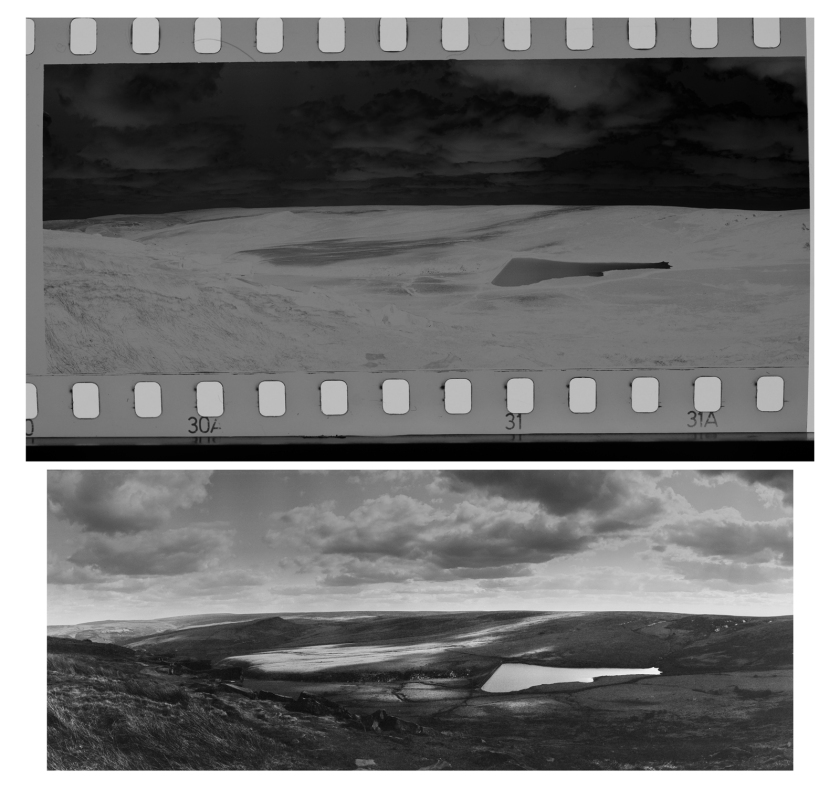In this part of the semi-stand series I am going to look at another new-to-me film stock: Ferrania P30. This was recommended to me by a contact on Twitter after they read my response to my first roll of FT12; the film which incidentally kick-started semi-stand week and which I will talk about in the final post in this series.

In the first part of the series I talked about the methodology and also mentioned why I was having a week of semi-stand development. The suggested timings for Ferrania in Rodinal (1+1) were a good example of why I often fight shy of using this method. Sixty minutes! By the time you add in stop, fix and washing cycles you are looking at between one and a quarter and one and a half hours depending on how fast I agitate during my adapted Ilford wash cycle. For one film!
This roll of film ended up being a roll of two distinct parts. The first part of the roll was used on a wander around the back streets of the small town in which I live. Like all of the negatives on the roll these are sharp, punchy and have bags of contrast. The second part of the roll was used up on the moors above Elland and with a foreground in heavy shadow apart from patches of sunlit moorland and a lovely bright sky the film was no match for the dynamic range of the scene. With no means of using a neutral density graduated filter I plumped for a middle-ground exposure and hoped for the best. To be fair I wouldn’t have used the Horizon in such conditions usually but this was an impromptu trip and the Horizon with Ferrania loaded was all I had in the bag at the time.
Overall I like this film, deep blacks and bright whites are its main characteristics (based on using one roll – this is NOT a definitive review!!) with loads of contrast and personality.


On the left, negative with a positive created by simply inverting the negative in Photoshop and adding a Levels adjustment. On the right, the negative and below it a full-worked version created in Photoshop. I rarely do more than the a simple inversion and Levels when posting to social media. Full-blown conversions are a rarity from me these days as I’d rather spend the time with a camera.
So, once again the semi-stand development in very diluted Rodinal has produced some lovely negatives. I am looking forward to working with some of these in the darkroom but before I do I just wanted to say a few words on the so-called hybrid approach. Using a film camera to capture the images and traditional development methods to produce negatives with this approach that is the end of the “analog” part of the process and from here on its purely digital. The negatives are scanned or otherwise copied using a digital camera and the workflow from there involves the photographers software and digital processing techniques of choice. The image at the top of the page was created this way as were those immediately above.
Some people decry the hybrid approach as not being “true”. I think this is a high-handed attitude and have no time for those who denigrate hybrid workers as somehow not being “proper” photographers. To my mind it matters not whether you are a died-in-the wool traditionalist who only uses “analog” (I detest the term) processes, a purely digital photographer or someone who straddles both camps and uses the hybrid method. We are all producing photographic images – it matters not to me how an image was produced. Whilst I can fully appreciate the skills and art that go into producing a darkroom print it does not make the final image somehow better for having eschewed contact with a computer. Anyway, soap box away for today.



So, there you have it. Another successful semi-stand experiment, another new-to-me film with plenty of contrast and bags of personality and whilst it won’t be added to my regular shopping list I look forward to playing with this combination again.
The first part of this series outlined the methodology employed for the semi-stand development of each roll in this series. The second post covered the “scanning” methodology, a basic conversion such as I would do for Twitter for example and also touched upon the benefits of researching beyond simply looking for development suggestions when using a new film. In this part, I looked at Ferrania P30 in semi-stand and talked about a hybrid digital-analog approach to film photography. I hope you have enjoyed it.
In a future post I will look at the development of three rolls of 120 Ilford FP4+ and my approach to printing these negatives. I will conclude the series by looking at another new-to-me 35mm film, FT12, the film that started the week and which is destined through a quirk in my personal logic to close out the semi-stand series.
Another interesting post, thank you. I don’t the look of this film as much as the last one. A bit too contrasty for me. I’m checking my videos for the expression “analog” and will edit it out 😉
Now, you promise FP4 next! I’m salivating!!
LikeLiked by 1 person
No pressure then 🤣
LikeLiked by 1 person